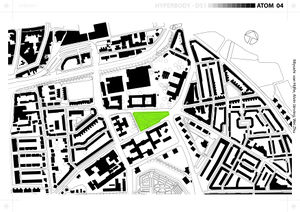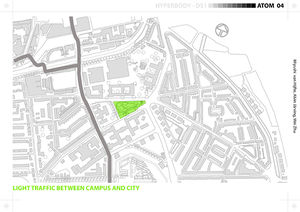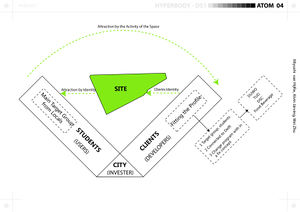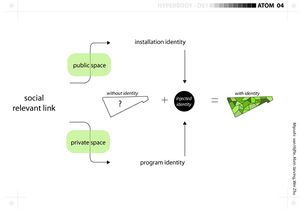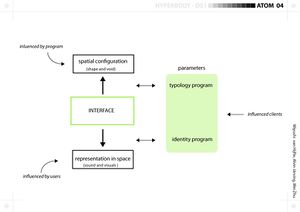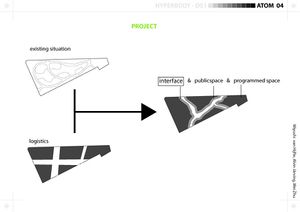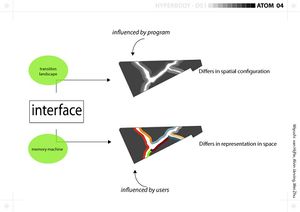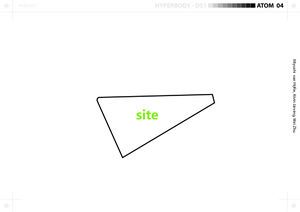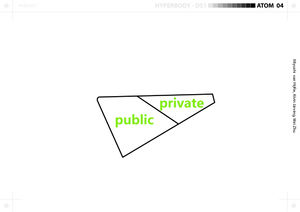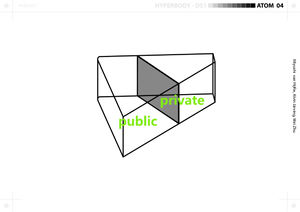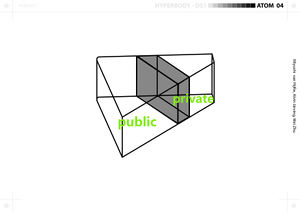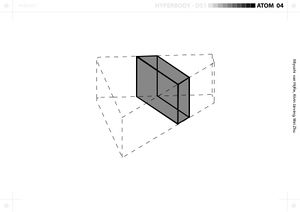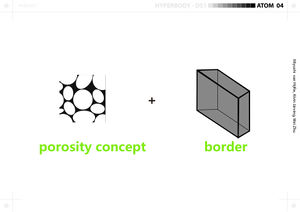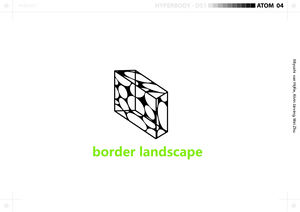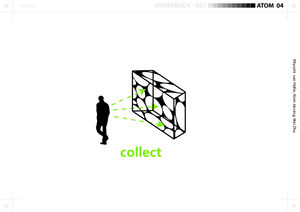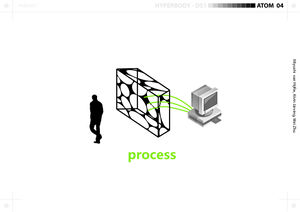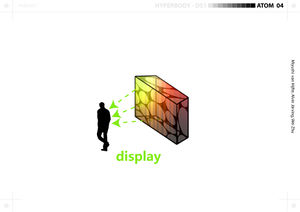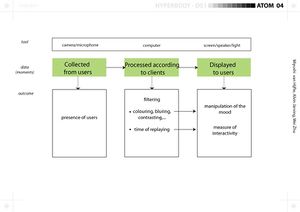atom04:'''PHASE 1'''
| (489 intermediate revisions by 3 users not shown) | |||
| Line 1: | Line 1: | ||
| − | + | '''''What are you valuing when you are in public space?''''' | |
| + | *most important is the greenery and the plants growing there. I not so much a fan of a city made of stone and tarmac. I enjoy different surface materials like gravel, grass, wood. I also consider important the distribution of the area, I enjoy more smaller and fragmented places than big squares. | ||
| + | *Openness,cosy and warm feeling trough form colors or peolpe, greenery. | ||
| + | *Many people to watch. To buy some food an drinks and to lounch in the sun. | ||
| + | * Tranquil nature, where you can sit down and enjoy. To drink and eat something. and if the place is a bit crowded but not to much. There should be something to look at.(especially something what changes) | ||
| + | *Colors, Things were you can look at what changes.Water, green place with birds singing. | ||
| + | *Sit possibilities. Orientated at the sun. Nice route. Close to facilities. accesibility with public transport. | ||
| + | *Look to other people, enyoing the weather. | ||
| + | *Social atmosphere. Everyone can enjoy the feeling of freedom. | ||
| + | '''''Example of a public space which you enjoy? What in particular do you like at that place?''''' | ||
| + | * I enjoy more southern Europe piazzas. A perfect image of them is shown in the James Bond movies... I think that monument has should be part of public space. | ||
| + | * Mekelpark of the TU Campus,Because of its openess and the greenery space, in some way surprising through its paths and different heights of it the park. | ||
| + | * Vondelparc in Amsterdam. or along the canals, to watch passing people. | ||
| + | *The view on the 'Oost-poort' in Delft.Nice view over the water and beautiful historical buildings. | ||
| + | * Around the Erasmusbrug in Rotterdam. The grandeur if it is nice. | ||
| + | *Bastiaansplein Zuidpoort, all facilities on walk distance. The central markt in delft, big central square what is a oppotunity for organised activities. | ||
| + | *Wilhelmina Park. That is a nice park with some water, bridges, a nice looking lawn and big trees. Of course it doesn't come to the real forest but for a city it is nice. | ||
| + | *Garden, playground. Everyone can enter the space without any fetter. I do not like the so called “public space”, such as shopping mall where baggers are not allowed to get into. | ||
| + | '''''What would be the spatial qualities why you would take a longer path.''''' | ||
| + | * when I am with a bike I am sometimes taking longer path to have a more interesting ride. I value going uphill and downhill, also having interesting turns. When I am walking then I would take a longer path if I can go through nature or some very beautiful place. | ||
| + | *a calming environment to clear op you mind when you are stressed. A place where you can buy sandwiches 'to go'. | ||
| + | *For alternation, or to buy food and drinks. | ||
| + | *In the summer, and to buy some drinks and food. | ||
| + | *To see other interesting creative people, places where things happen. | ||
| + | *Pavement, what is comfortable to ride with you bike.Safety for in the evenings. | ||
| + | *A curved road, which has some sideways which are all different. I'd check all of them out. | ||
| + | *Of course, the physical factors are very important, such as temperature, moisture and so on. While the atmosphere of participators are really important, such as the people’s attitudes and mood. | ||
| + | '''''Are you interested in an interactive space, which could be influenced by your presence? In which why?''''' | ||
| + | *Interesting, it would definitely fit to the profile of the technical university. | ||
| + | *Interesting, But the way you can influence it is more important than that you influence it. | ||
| + | *Interesting, Innovative idea. On the other hand the calmness and anonymity is gone. | ||
| + | *Yes interesting, (example of place station in Holland where you can influence the colors of the lights. Delft Science center, some interactive things what have to deal with Science. | ||
| + | *Yes nice (example of interactive projection on the floor in a casino; you can influence the projection by walking on it. | ||
| + | *No, in a public place it is just for relaxing.Not for an interaction with the place. | ||
| + | '''''Do you like to see the reaction in real time? Or is it better later when you will be there another time?''''' | ||
| + | *I would like to see the reaction little later. It is important to see the result, but when it is a little later you can rethink your relationship to the process. The replaying of the data shouldn't be later that couple of minutes. | ||
| + | * Seeing your self real-time is more interesting rather to see it later. Maybe both is also an option. | ||
| + | * Real-time is the most interesting way to display, and if the displaying becomes more personal it should be. | ||
| + | * Want to see in what are you influencing with your presence. | ||
| + | * Nice to see it real-time but not particularly needed. If you are displayed later on it shouldn't be to personal | ||
| + | * In real time it would be nice, I suppose. | ||
| + | '''''If you are seeing yourself from a display in a public space do you like it? Why?''''' | ||
| + | *I feel totally comfortable with that. Although people with psychological complexes might not like that. | ||
| + | *It feels a bit uncomfortable. infringement of pricacy. | ||
| + | *Yes, it can be bring back memories. | ||
| + | *Yes, in that way you can also see other people back.If you are part of a bigger thing with other peolpe it's nice. | ||
| + | * | ||
| + | *If you go to a public place you be there for relaxing and not to stand out of the crowd. | ||
| + | *I probably won't mind, but I guess most people don't like it to see any video (or audio!) recordings of themselves. | ||
| + | *No, I don’t that feeling. Everybody should enjoy themselves and not be disturbed | ||
| + | '''''Do you have an example of being displayed in a public place?''''' | ||
| + | * An art project in Tel Aviv. Whit a real-time projection of on the screen. At the same time you was drew by the computer on that screen. | ||
| + | *Security camera. Like to see your self real time back. | ||
| + | *An art project called: 'de wereld van witter de with' in Rotterdam in 2010. It was a screen with projected of what the camera maked photos and videos. and that was assembled in one projection. So you looked in de past and the present at the same time. | ||
| + | '''''Are you also going to some public spaces without a particular program? when and why?''''' | ||
| + | *Yes, to have some lunch. In its particulair during summer. | ||
| + | *depends on the people who are in the public place. | ||
| + | *Yes, If you have something to look at. | ||
| + | *Yes to have some lunch. But should be cosy in some way. | ||
| + | *Not always, depends on your intention of the visit, and on the enviroment. | ||
| + | *To relax and for the socialbility | ||
| + | *If the weather is nice or to meet with other people. | ||
| + | '''''What kind of program do you like to add in a public place?''''' | ||
| + | *Cafe, whit also launch and study opportuniies. Culture program, exhibition space. And if it is for students through students | ||
| + | *Places for networking. You can also just be there without networking. | ||
| + | * Nice cafe for all students. | ||
| + | *Sport activities | ||
| + | '''''what do you think about the connection between the city and the campus. What kind of program would create the link and what are you missing at the campus right now?''''' | ||
| + | * Connection is not too good. a common area for all of the students from different faculties. The cultural centre in the end part of the campus doesn't fulfill that function. There could be a student cinema or a student club. A restaurant could also support these functions. This could be also a gate to the university, a place from where to get an overview of the things researched in the campus. | ||
| + | *Lunch place what it not caterd by Sodexo. | ||
| + | * Shop with particular student items | ||
| + | * A nice club for partying during the night | ||
| − | |||
| − | + | ''Vergerd Veskimagi'' (Male, 24, estonian,,MSc Student TU Delft, Petroleom engineering) | |
| − | + | ||
| − | + | ''Danilelle Nativ'' (Female, 23, Dutch, Bsc Student TU Delft, Mechanical engineering) | |
| − | + | ''Jolien Rip'' (Female, 21, Dutch, Bsc Student TU Delft and Rotterdam, Civil engeneering and Econometry) | |
| − | + | ''Laurens van Dort'' (Male, 21, Dutch, Bsc Student TU Delft , Industrial Design) | |
| − | + | ''Nickey Vafaee'' (Female, 21, Dutch, Bsc Student TU Delft , Architecture) | |
| − | + | ''Ruben Swart'' (Male, 20, Dutch, Bsc Student TU Delft , Mechanical Engeneering) | |
| + | ''Cheng Su'' (Male, 22, Chinese, Msc Student TU Delft , Architecture) | ||
| − | |||
| + | <div style="float: left; width: 1010px; "> | ||
| + | [[atom04:home|back to atom 4 home]] | ||
| + | <div style="float: left; width: 1010px; margin-right:20px"> | ||
| + | ='''PHASE 1 - DESIGN BRIEF'''= | ||
| + | </div> | ||
| − | |||
| + | <div style="float: left; width: 320px; margin-right:20px"> | ||
| − | + | =CONTEXT= | |
| + | <div style="float: left; width: 320px; margin-right:20px; text-align:left"> | ||
| + | ==Site== | ||
| − | [[atom04: | + | [[atom04:'''Existing situation'''|'''EXISTING SITUATION''']] |
| − | [[atom04: | + | Site is located between the TU Delft Campus and the Old Town. [[atom04:'''Existing situation'''|'''see photos, maps, neighbours''']] |
| − | [[ | + | [[File:Map.jpg|300px|]] |
| + | [[atom04:'''Analyses'''|'''ANALYSES''']] | ||
| − | + | We analized [[atom04:Zoningplan|'''zoningplans''']] from the municipality of Delft. We analized the site in variours scales [[atom04:'''Analyses'''|'''see more''']] | |
| + | [[File:Atom4 light traffic.jpg|300px]] | ||
| − | + | '''CONCLUSION''' | |
| − | + | The zoning plan describes the need for the site to become the '''[[atom04:'''Analyses'''#Scale of Delft|link]] between the city and the campus'''. To achieve that there is a need for the site to become more than its location per se promises. The link between the city and campus has to have a wider public meaning, the site has to start '''interrupting the local [[atom04:'''Analyses'''#Scale of TU North|light-traffic flows]]''' to achieve needed critical mass. The '''lacking of clear character''' must be replaced with evolving identity. It has to be strongly [[atom04:'''References'''#DIFFERENTIATION|'''differentiating''']] and not counting on program that might change rapidly. To clear the problems of invisibility, the site needs to become closely tied to its neighbours. To '''attract the functions that will improve the site's relevance''' in the scale of Delft, the site needs to be conditioned for spatial affordance. | |
| − | + | ==Validators== | |
| − | |||
| − | + | [[File:Students and clients.jpg|300px]] | |
| − | |||
| − | + | '''USERS''' | |
| − | + | The students will be the users of our project. | |
| + | [[atom04:'''References'''#USERS|'''ARCHIVE - students''']] | ||
| − | + | '''CLIENTS''' | |
| − | + | As we are dealing with the changable program, we have no fixed clients. We have researched the needs of different developers, who might become our clients. We have created a profile to assort the clients who will fit the context (target group ; students; fixed concept for the spatial setting; connected to Delft / TU Delft). [[atom04:'''References'''#CLIENTS|'''ARCHIVE - clients''']] | |
| − | + | '''EXPERTS''' | |
| − | + | We are working with experts who are specialists in : local context(students), urban regeneration processes (identity), the public and private (border landscape), typology, function (possible clients with spatial needs), technical solutions (translate certain data into sounds and visuals) [[atom04:'''References'''#EXPERTS|'''ARCHIVE - experts''']] | |
| − | + | '''CONCLUSION''' | |
| − | + | The users (mostly students) are consuming the public space character. Through that they are becoming activaters of the site and the programme. The clients (Possibilites: TU Delft, Science Centre, Food Caterer) will get a boost from that to develop the programmed space (commercial functions, exhibition, showroom,...) | |
| − | + | ||
| − | + | ||
| − | + | ||
| − | + | ||
| − | + | ||
| − | + | ||
| − | + | ||
| − | + | ||
| − | + | ||
| − | + | ||
| − | + | ||
| − | + | ||
| − | + | ||
| − | + | ||
| − | + | ||
| − | + | ||
| − | + | ||
| − | + | ||
| − | + | ||
| − | + | ||
| − | + | ||
| − | + | ||
| + | </div> | ||
</div> | </div> | ||
| − | < | + | <br/> |
| − | + | ||
| − | + | ||
| − | + | ||
| − | + | ||
| − | + | ||
| − | + | ||
| − | + | ||
<div style="float: left; width: 320px; margin-right:20px; text-align:left"> | <div style="float: left; width: 320px; margin-right:20px; text-align:left"> | ||
| − | |||
| + | =CONCEPT= | ||
| + | <div style="float: left; width: 320px; margin-right:20px"> | ||
| + | ==Challenge== | ||
| + | Our design challenge is to create a site with [[atom04:'''References'''#IDENTITY|'''evolving identity''']] which serves the '''spatial affordance''' of certain activities in dynamically '''changing programmatic context'''. | ||
| + | Our statment is that the site with strong identity is attract users. By doing so the site can have a '''wider public relevance'''. This is crucial for becoming the [[atom04:'''Analyses'''#Scale of Delft|'''link''']] between campus and the city. | ||
| + | [[File:atom4_challengefinal.jpg|300px]] | ||
| + | ==Specialization== | ||
| + | '''Site conditioning for identity.''' The site has to be conditioned to have a set of qualities that allow fixed character through desired activities. We are achieving these qualities through representational and spatial means. Our challenge is to manipulate with the memory of the users to amplify activities. | ||
| − | + | [[File:Atom4_interventionfinal.jpg|300px]] | |
| + | ==Project== | ||
| − | + | Our Project is about the '''gradience between the private and public'''. The design effort lies in the [[atom04:'''References'''#TYPOLOGY RESEARCH|'''transition space''']] space between the streetscape and the buildings. This concept creates the contrast between '''flexible buildings and the identity embodied in the interface landscape.''' The first step of the process is the creation of the site plan with the renewed traffic scheme. According to that the borderlines of the private and public space will be proposed. | |
| + | </div> | ||
| + | We are open for collaboration with other atoms in terms of the design of private functions (buildings), also in terms of the design of soundscapes and the need of programme. | ||
| + | [[File:Atom4_projectfinal.jpg|300px]] | ||
| − | + | <div style="float: left; width: 320px; text-align:left"> | |
| − | + | ==References== | |
| + | [[atom04:'''References'''|'''See our ARCHIVE of references, definitions, research, interviews''']] | ||
| + | </div> | ||
| + | </div> | ||
| − | + | <br/> | |
| − | + | <div style="float: left; width: 320px; text-align:left"> | |
| − | + | <div style="float: left; width: 320px; text-align:left"> | |
| − | + | <div style="float: left; width: 320px; text-align:left"> | |
| + | =INTERVENTION= | ||
| − | + | <div style="float: left; width: 320px; text-align:left"> | |
| + | ==Project Components== | ||
| + | The interface between the public and private is created through spatial needs according to the client profiles ('''transition landscape'''). The interface embodies the representational means ('''the memory machine''') to achieve the identity. | ||
| + | [[File:Atom4 interventionfinalb.jpg|300px]] | ||
| − | + | <div style=" margin-right:20px; width: 20px; "> | |
| + | {{#slideshow: | ||
| + | <div>[[File:Atom4-project1.jpg|frameless|none|300px|link=]]</div> | ||
| + | <div>[[File:Atom4-project2.jpg|frameless|none|300px|link=]]</div> | ||
| + | <div>[[File:Atom4-project3.jpg|frameless|none|300px|link=]]</div> | ||
| + | <div>[[File:Atom4-project4.jpg|frameless|none|300px|link=]]</div> | ||
| + | <div>[[File:Atom4-project5.jpg|frameless|none|300px|link=]]</div> | ||
| + | <div>[[File:Atom4-project6.jpg|frameless|none|300px|link=]]</div> | ||
| + | <div>[[File:Atom4-project7.jpg|frameless|none|300px|link=]]</div> | ||
| + | <div>[[File:Atom4-project 8.jpg|frameless|none|300px|link=]]</div> | ||
| + | <div>[[File:Atom4-project 9.jpg|frameless|none|300px|link=]]</div> | ||
| + | <div>[[File:Atom4-project 10.jpg|frameless|none|300px|link=]]</div> | ||
| + | |id=slides refresh=2500 transition=fade sequence=forward }} | ||
| + | </div> | ||
| + | ==Transition Landscape== | ||
| − | The | + | The Border between the private and the public gives us a clear [[atom04:'''References'''#TYPOLOGY RESEARCH|'''research''']] theme on existing typologies. The becoming from private to public (the levels and the sizes of the transition spaces) can be seen as parameters for the spatial affordance of desired program. The parametric model will be dealing with the measure of the void in terms of the [[atom04:'''References'''#POROCITY LAB, Universität für die Angewandte Kunst Wien|'''porosity''']], transparency and permeability. |
| − | + | ||
| − | + | ||
| − | ''' | + | [[atom04:'''References'''#TYPOLOGY RESEARCH|'''see more of our typology research''']] |
| − | + | [[File:Bookstore.jpg|300px]] | |
| − | + | ||
| − | + | ==Memory Machine== | |
| − | + | The memory machine is a tactical tool to improve the site identity. | |
| + | It replays 'translated' moments according to the needed mood at every moment. | ||
| + | The replayed moments are collected dating from the users who are using the site. | ||
| + | The translation is done by a kind of filter what translate the monents into sounds and visuals. | ||
| + | The replaying is a representation in space what will create a different 'mood'. | ||
| − | |||
| − | |||
| + | Thereby the representation is related/adjunct to time. | ||
| + | The time of replay will influences the experiences of the users. | ||
| + | This is controlled by the occupation of the site. | ||
| + | [[File:atom4_memorymachine.jpg|300px]] | ||
| − | + | </div> | |
| − | + | </div> | |
| − | + | ||
| − | + | ||
| − | + | ||
| − | + | ||
| − | + | ||
| − | + | ||
| − | + | ||
| − | + | ||
| − | + | ||
| − | + | ||
| − | + | ||
| − | + | ||
| − | + | ||
| − | + | ||
| − | + | ||
| − | + | ||
| − | + | ||
| − | + | ||
| − | + | ||
| − | + | ||
| − | + | ||
| − | + | ||
| − | + | ||
| − | + | ||
| − | + | ||
| − | + | ||
| − | + | ||
| − | + | ||
| − | + | ||
| − | + | ||
| − | + | ||
| − | + | ||
| − | + | ||
| − | + | ||
| − | + | ||
| − | + | ||
| − | + | ||
| − | + | ||
| − | + | ||
| − | + | ||
| − | + | ||
| − | + | ||
| − | + | ||
| − | + | ||
| − | + | ||
| − | + | ||
| − | + | ||
| − | + | ||
| − | + | ||
| − | + | ||
| − | + | ||
| − | + | ||
| − | + | ||
| − | + | ||
| − | + | ||
| − | + | ||
| − | + | ||
| − | + | ||
| − | + | ||
| − | + | ||
| − | + | ||
| − | + | ||
| − | + | ||
| − | + | ||
| − | + | ||
| − | + | ||
| − | + | ||
| − | + | ||
| − | + | ||
Latest revision as of 13:31, 17 October 2011
What are you valuing when you are in public space?
- most important is the greenery and the plants growing there. I not so much a fan of a city made of stone and tarmac. I enjoy different surface materials like gravel, grass, wood. I also consider important the distribution of the area, I enjoy more smaller and fragmented places than big squares.
- Openness,cosy and warm feeling trough form colors or peolpe, greenery.
- Many people to watch. To buy some food an drinks and to lounch in the sun.
- Tranquil nature, where you can sit down and enjoy. To drink and eat something. and if the place is a bit crowded but not to much. There should be something to look at.(especially something what changes)
- Colors, Things were you can look at what changes.Water, green place with birds singing.
- Sit possibilities. Orientated at the sun. Nice route. Close to facilities. accesibility with public transport.
- Look to other people, enyoing the weather.
- Social atmosphere. Everyone can enjoy the feeling of freedom.
Example of a public space which you enjoy? What in particular do you like at that place?
- I enjoy more southern Europe piazzas. A perfect image of them is shown in the James Bond movies... I think that monument has should be part of public space.
- Mekelpark of the TU Campus,Because of its openess and the greenery space, in some way surprising through its paths and different heights of it the park.
- Vondelparc in Amsterdam. or along the canals, to watch passing people.
- The view on the 'Oost-poort' in Delft.Nice view over the water and beautiful historical buildings.
- Around the Erasmusbrug in Rotterdam. The grandeur if it is nice.
- Bastiaansplein Zuidpoort, all facilities on walk distance. The central markt in delft, big central square what is a oppotunity for organised activities.
- Wilhelmina Park. That is a nice park with some water, bridges, a nice looking lawn and big trees. Of course it doesn't come to the real forest but for a city it is nice.
- Garden, playground. Everyone can enter the space without any fetter. I do not like the so called “public space”, such as shopping mall where baggers are not allowed to get into.
What would be the spatial qualities why you would take a longer path.
- when I am with a bike I am sometimes taking longer path to have a more interesting ride. I value going uphill and downhill, also having interesting turns. When I am walking then I would take a longer path if I can go through nature or some very beautiful place.
- a calming environment to clear op you mind when you are stressed. A place where you can buy sandwiches 'to go'.
- For alternation, or to buy food and drinks.
- In the summer, and to buy some drinks and food.
- To see other interesting creative people, places where things happen.
- Pavement, what is comfortable to ride with you bike.Safety for in the evenings.
- A curved road, which has some sideways which are all different. I'd check all of them out.
- Of course, the physical factors are very important, such as temperature, moisture and so on. While the atmosphere of participators are really important, such as the people’s attitudes and mood.
Are you interested in an interactive space, which could be influenced by your presence? In which why?
- Interesting, it would definitely fit to the profile of the technical university.
- Interesting, But the way you can influence it is more important than that you influence it.
- Interesting, Innovative idea. On the other hand the calmness and anonymity is gone.
- Yes interesting, (example of place station in Holland where you can influence the colors of the lights. Delft Science center, some interactive things what have to deal with Science.
- Yes nice (example of interactive projection on the floor in a casino; you can influence the projection by walking on it.
- No, in a public place it is just for relaxing.Not for an interaction with the place.
Do you like to see the reaction in real time? Or is it better later when you will be there another time?
- I would like to see the reaction little later. It is important to see the result, but when it is a little later you can rethink your relationship to the process. The replaying of the data shouldn't be later that couple of minutes.
- Seeing your self real-time is more interesting rather to see it later. Maybe both is also an option.
- Real-time is the most interesting way to display, and if the displaying becomes more personal it should be.
- Want to see in what are you influencing with your presence.
- Nice to see it real-time but not particularly needed. If you are displayed later on it shouldn't be to personal
- In real time it would be nice, I suppose.
If you are seeing yourself from a display in a public space do you like it? Why?
- I feel totally comfortable with that. Although people with psychological complexes might not like that.
- It feels a bit uncomfortable. infringement of pricacy.
- Yes, it can be bring back memories.
- Yes, in that way you can also see other people back.If you are part of a bigger thing with other peolpe it's nice.
- If you go to a public place you be there for relaxing and not to stand out of the crowd.
- I probably won't mind, but I guess most people don't like it to see any video (or audio!) recordings of themselves.
- No, I don’t that feeling. Everybody should enjoy themselves and not be disturbed
Do you have an example of being displayed in a public place?
- An art project in Tel Aviv. Whit a real-time projection of on the screen. At the same time you was drew by the computer on that screen.
- Security camera. Like to see your self real time back.
- An art project called: 'de wereld van witter de with' in Rotterdam in 2010. It was a screen with projected of what the camera maked photos and videos. and that was assembled in one projection. So you looked in de past and the present at the same time.
Are you also going to some public spaces without a particular program? when and why?
- Yes, to have some lunch. In its particulair during summer.
- depends on the people who are in the public place.
- Yes, If you have something to look at.
- Yes to have some lunch. But should be cosy in some way.
- Not always, depends on your intention of the visit, and on the enviroment.
- To relax and for the socialbility
- If the weather is nice or to meet with other people.
What kind of program do you like to add in a public place?
- Cafe, whit also launch and study opportuniies. Culture program, exhibition space. And if it is for students through students
- Places for networking. You can also just be there without networking.
- Nice cafe for all students.
- Sport activities
what do you think about the connection between the city and the campus. What kind of program would create the link and what are you missing at the campus right now?
- Connection is not too good. a common area for all of the students from different faculties. The cultural centre in the end part of the campus doesn't fulfill that function. There could be a student cinema or a student club. A restaurant could also support these functions. This could be also a gate to the university, a place from where to get an overview of the things researched in the campus.
- Lunch place what it not caterd by Sodexo.
- Shop with particular student items
- A nice club for partying during the night
Vergerd Veskimagi (Male, 24, estonian,,MSc Student TU Delft, Petroleom engineering)
Danilelle Nativ (Female, 23, Dutch, Bsc Student TU Delft, Mechanical engineering)
Jolien Rip (Female, 21, Dutch, Bsc Student TU Delft and Rotterdam, Civil engeneering and Econometry)
Laurens van Dort (Male, 21, Dutch, Bsc Student TU Delft , Industrial Design)
Nickey Vafaee (Female, 21, Dutch, Bsc Student TU Delft , Architecture)
Ruben Swart (Male, 20, Dutch, Bsc Student TU Delft , Mechanical Engeneering)
Cheng Su (Male, 22, Chinese, Msc Student TU Delft , Architecture)
Contents |
PHASE 1 - DESIGN BRIEF
CONTEXT
Site
Site is located between the TU Delft Campus and the Old Town. see photos, maps, neighbours
We analized zoningplans from the municipality of Delft. We analized the site in variours scales see more
CONCLUSION
The zoning plan describes the need for the site to become the link between the city and the campus. To achieve that there is a need for the site to become more than its location per se promises. The link between the city and campus has to have a wider public meaning, the site has to start interrupting the local light-traffic flows to achieve needed critical mass. The lacking of clear character must be replaced with evolving identity. It has to be strongly differentiating and not counting on program that might change rapidly. To clear the problems of invisibility, the site needs to become closely tied to its neighbours. To attract the functions that will improve the site's relevance in the scale of Delft, the site needs to be conditioned for spatial affordance.
Validators
USERS
The students will be the users of our project. ARCHIVE - students
CLIENTS
As we are dealing with the changable program, we have no fixed clients. We have researched the needs of different developers, who might become our clients. We have created a profile to assort the clients who will fit the context (target group ; students; fixed concept for the spatial setting; connected to Delft / TU Delft). ARCHIVE - clients
EXPERTS
We are working with experts who are specialists in : local context(students), urban regeneration processes (identity), the public and private (border landscape), typology, function (possible clients with spatial needs), technical solutions (translate certain data into sounds and visuals) ARCHIVE - experts
CONCLUSION
The users (mostly students) are consuming the public space character. Through that they are becoming activaters of the site and the programme. The clients (Possibilites: TU Delft, Science Centre, Food Caterer) will get a boost from that to develop the programmed space (commercial functions, exhibition, showroom,...)
CONCEPT
Challenge
Our design challenge is to create a site with evolving identity which serves the spatial affordance of certain activities in dynamically changing programmatic context.
Our statment is that the site with strong identity is attract users. By doing so the site can have a wider public relevance. This is crucial for becoming the link between campus and the city.
Specialization
Site conditioning for identity. The site has to be conditioned to have a set of qualities that allow fixed character through desired activities. We are achieving these qualities through representational and spatial means. Our challenge is to manipulate with the memory of the users to amplify activities.
Project
Our Project is about the gradience between the private and public. The design effort lies in the transition space space between the streetscape and the buildings. This concept creates the contrast between flexible buildings and the identity embodied in the interface landscape. The first step of the process is the creation of the site plan with the renewed traffic scheme. According to that the borderlines of the private and public space will be proposed.
We are open for collaboration with other atoms in terms of the design of private functions (buildings), also in terms of the design of soundscapes and the need of programme.
INTERVENTION
Project Components
The interface between the public and private is created through spatial needs according to the client profiles (transition landscape). The interface embodies the representational means (the memory machine) to achieve the identity.
Transition Landscape
The Border between the private and the public gives us a clear research theme on existing typologies. The becoming from private to public (the levels and the sizes of the transition spaces) can be seen as parameters for the spatial affordance of desired program. The parametric model will be dealing with the measure of the void in terms of the porosity, transparency and permeability.
see more of our typology research
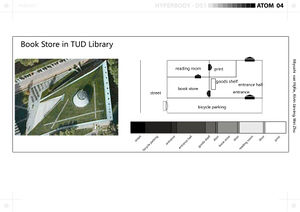
Memory Machine
The memory machine is a tactical tool to improve the site identity. It replays 'translated' moments according to the needed mood at every moment. The replayed moments are collected dating from the users who are using the site. The translation is done by a kind of filter what translate the monents into sounds and visuals. The replaying is a representation in space what will create a different 'mood'.
Thereby the representation is related/adjunct to time.
The time of replay will influences the experiences of the users.
This is controlled by the occupation of the site.
